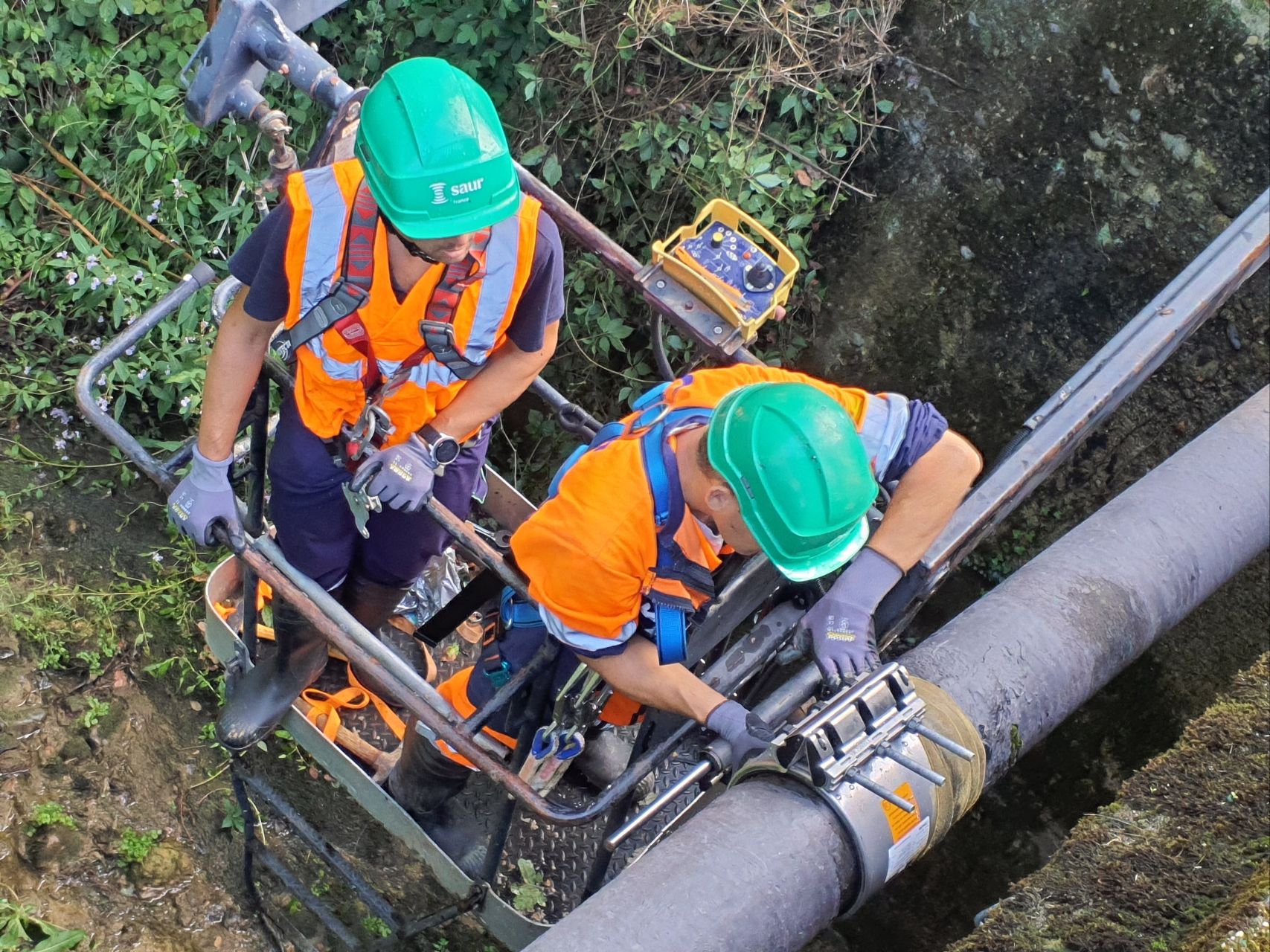Sébastien Picollo is operations manager for SATEG (a subsidiary of SAUR) which distributes drinking water to more than 35,000 subscribers in nearly 200 municipalities in the Pau region, located in southwestern France. Saur manages 6 drinking water production plants supplying several large reservoirs (8.5 million m3 of water produced per year) in the area. The water distribution network includes 1,200 km of cast iron and asbestos cement pipes (DN100, DN150 and DN200) then in PVC for the smallest sections (DN60, DN90 and DN110).
Repair in the Village of Arzacq-Arraziguet
Arzacq-Arraziguet is a French village with 1093 inhabitants, located in the Pyrénées-Atlantiques department in the Nouvelle-Aquitaine region. SATEG was notified of a leak that had occurred on a pipe running alongside a bridge and crossing a river. The pipeline was suspended with accessibility constraints. The aerial part of the pipeline was made of DN200 steel and is part of an asbestos-cement network for the most part.
The leak that was visible from the road had a flow rate of 15m3/h under 11 bars of pressure. It was not possible to shut off the water from the network as it supplied several nearby farms and emptying the pipe was not an option. The challenge was to reduce the time of service interruption for the users concerned by repairing the leak quickly and safely, while taking into account the access constraints of the pipeline suspended from the bridge. To do this an aerial work platform was used to work at height and in complete safety.
The works department had two other leaks to attend to on this day and so they needed to make this repair as quickly as possible and move on to the next.
SATEG chose to use the Repamax permanent repair sleeve by Krausz for its ease of use and reliability in high pressure situations. This repair sleeve comes in sizing ranging from DN40 – DN1800 and in this case the 210mm width was the best fit. While this repair was used for a steel pipe it can also be used on asbestos-cement pipes.
Without the Repamax, the pipe would require welding, which was not possible since the leak was located at a low point in the network without the possibility of draining the pipe. It was therefore not an option to weld with water in the pipe. This repair sleeve was best suited to both access constraints and minimize the disruption of water service for customers.
Repair sleeve makes for a quick and easy installation
Sébastien Picollo said, “The application of Repamax is quite simple, unlike the old sleeves that we used before that were designed with a rigid rubber gasket that did not guarantee a perfect seal. We are quite happy with it.”
The light weight and clamping system on the repair sleeve meant repair crews could handle it without any real support. Also, the radial closing design and sealing systems helped eliminate installation errors. “As the pipe was still under pressure speed and ease really mattered,” said Sébastien Picollo.
The repair sleeve has a hydraulic pressure-assisted gasket that inflates as water pressure increases. This allows for three degrees of dynamic deflection on each end to reduce the risk of future damage to the pipe due to heavy traffic on the bridge and temperature changes. As it is weld-free and 100% stainless steel parts, the repair sleeve is resistant to corrosion.
Safety is a very important aspect of pipe repair and good equipment can make all the difference and reduce the time that field crews are spending in potential harmful situations. Sébastien Picollo said, “This repair sleeve gave us the ability to make the repair safely and easily within half an hour.”
The repair sleeve can be applied in several different ways. It can be stabbed fit to connect pipes or it can be wrapped around damaged sections to repair the pipe. This flexibility gives installers the option to either connect or repair a range of water and wastewater piping types. This multi-functionality, together with wide tolerance, substantially reduces inventory costs and saves shelf space as the product suits a wide range of pipe diameters, eliminating the need for dedicated wrap-around and coupling products.
Author: Bertrand Gonthiez, Mueller Regional Sales Manager for Europe








